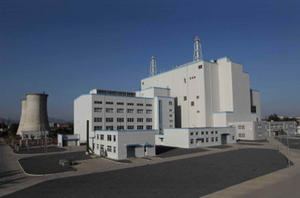Nuclear mattersA first: China connects fast-neutron reactor to the grid
Fast-neutron reactors use uranium sixty times more efficiently than a normal reactor; if adopted, the reactors would make current uranium reserves go longer; the reactor design also minimizes radioactive waste from nuclear energy; China is the first country to connect a fast-neutron reactor to its grid

China connects low-power reactor to its grid // Source: skyscrapercity.com
China said Friday it had hooked its first so-called “fourth generation” nuclear reactor to the grid, a breakthrough that may reduce the country’s reliance on uranium imports.
The experimental fast-neutron reactor is the result of more than twenty years of research and could also help minimize radioactive waste from nuclear energy, the state-run China Institute of Atomic Energy (CIAE) said.
The Wall Street Journal reports that China is the ninth country to develop a fast-neutron reactor, which uses uranium sixty times more efficiently than a normal reactor, helping the country to reduce its reliance on imports of the mineral.
Beijing has stepped up investment in nuclear power in an effort to reduce its world-leading carbon emissions and scale down its heavy reliance on coal, which accounts for 70 percent of its energy needs.
The WSJ notes that China’s uranium reserves are limited, and it will have to import increasingly large amounts as its civilian nuclear program gathers speed.
China — the world’s second largest economy — currently has fourteen nuclear reactors (by comparison: the United States has 104), and it is building more than two dozen additional reactors. It aims to get 15 percent of its power from renewable sources by 2020.
According to the World Nuclear Association, China aims to increase nuclear power capacity to 80 gigawatts by 2020 from 10.8 gigawatts in 2010.
The fourth-generation reactor, located just outside Beijing, has a capacity of only twenty megawatts. Other recently launched nuclear reactors in China had a capacity of more than one gigawatt, or 1,000 megawatts.
The WSJ notes that the this latest technological step comes after China, in January, succeeded in reprocessing spent nuclear fuel in an experimental reactor in the northwestern province of Gansu in January.
